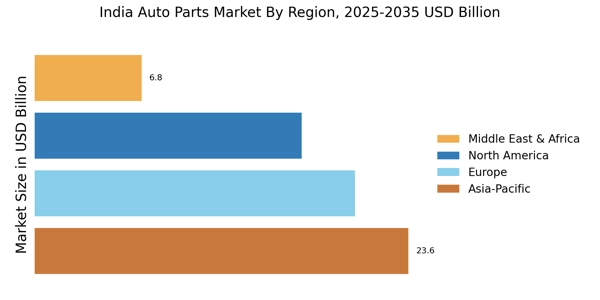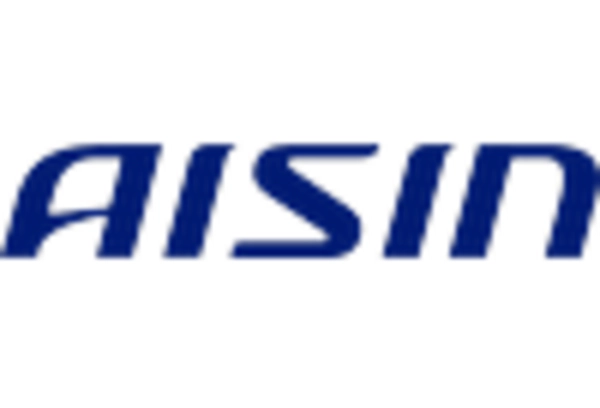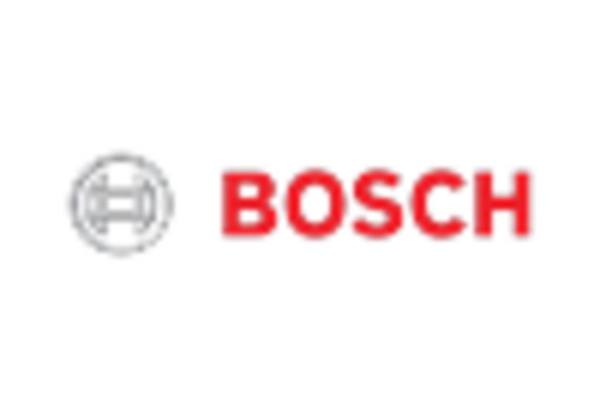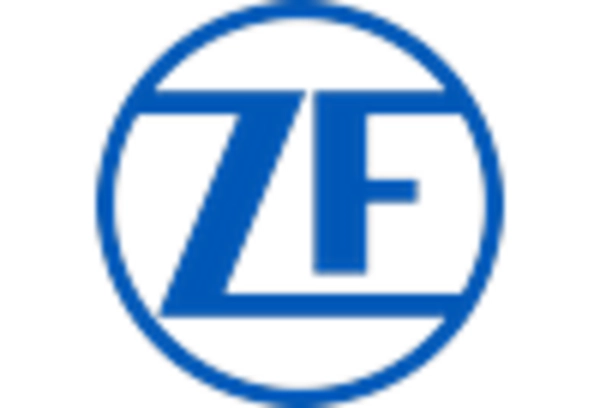Rising Vehicle Production
The India Auto Parts Market is experiencing a notable surge in vehicle production, driven by increasing consumer demand and favorable government policies. In recent years, the production of passenger vehicles has seen a compound annual growth rate (CAGR) of approximately 5.5%, indicating a robust growth trajectory. This rise in production necessitates a corresponding increase in the demand for auto parts, as manufacturers seek to ensure quality and efficiency in their vehicles. Furthermore, the government's initiatives to promote manufacturing under the Make in India program have bolstered local production capabilities, thereby enhancing the overall landscape of the India Auto Parts Market. As vehicle production continues to expand, the auto parts sector is likely to benefit significantly, creating opportunities for both established players and new entrants.
Technological Advancements
Technological advancements are playing a pivotal role in shaping the India Auto Parts Market. Innovations such as advanced driver-assistance systems (ADAS), connected vehicles, and automation in manufacturing processes are becoming increasingly prevalent. The integration of these technologies not only enhances vehicle safety and performance but also drives the demand for specialized auto parts. For instance, the market for electronic components in vehicles is projected to grow at a CAGR of around 10% over the next few years. This trend suggests that manufacturers will need to adapt their product offerings to meet the evolving technological landscape. Consequently, the India Auto Parts Market is likely to witness a shift towards more sophisticated and high-tech components, which could redefine competitive dynamics within the sector.
Increasing Aftermarket Demand
The aftermarket segment within the India Auto Parts Market is witnessing substantial growth, fueled by a rising number of vehicles on the road and changing consumer preferences. As vehicle ownership increases, the demand for replacement parts, accessories, and maintenance services is also on the rise. It is estimated that the aftermarket segment could account for nearly 40% of the total auto parts market by 2025. This growth is further supported by the increasing awareness among consumers regarding vehicle maintenance and the availability of e-commerce platforms that facilitate easy access to auto parts. As a result, the India Auto Parts Market is likely to see a diversification of product offerings, catering to both budget-conscious consumers and those seeking premium components.
Growing Focus on Sustainability
The growing focus on sustainability is becoming a defining characteristic of the India Auto Parts Market. As environmental concerns gain prominence, manufacturers are increasingly adopting sustainable practices in their operations. This includes the use of recyclable materials, energy-efficient production processes, and the development of eco-friendly auto parts. The market for green auto parts is projected to expand significantly, as consumers become more environmentally conscious. Furthermore, regulatory pressures are pushing companies to comply with stricter emissions standards, which may lead to increased demand for innovative and sustainable components. Consequently, the India Auto Parts Market is likely to evolve, with sustainability becoming a key driver of innovation and competitiveness.
Government Initiatives and Policies
Government initiatives and policies are significantly influencing the India Auto Parts Market. The introduction of the Automotive Mission Plan aims to position India as a global automotive hub, fostering investment and innovation in the sector. Additionally, policies promoting electric vehicles and sustainable practices are reshaping the market landscape. For instance, the Faster Adoption and Manufacturing of Hybrid and Electric Vehicles (FAME) scheme encourages manufacturers to develop eco-friendly vehicles, which in turn drives demand for specialized auto parts. These initiatives not only enhance the competitiveness of the India Auto Parts Market but also attract foreign investment, thereby creating a more conducive environment for growth and development.


















Leave a Comment